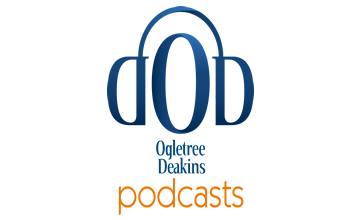Podcast: Play in new window | Download (Duration: 22:51 — 31.4MB) | Embed
Subscribe: Apple Podcasts | Spotify | TuneIn | More
In this podcast, Karen Tynan and Kevin Bland, who are leaders in our California Workplace Safety and Health Practice Group, offer a wide-ranging and nuanced discussion of abatement—the act of addressing and curing a hazard identified in a citation. Karen and Kevin offer practical takeaways related to when the duty to abate arises, documentation, and trial considerations, with a focus on the California Division of Occupational Safety and Health’s (Cal/OSHA) approach to abatement. They also cover best practices that may help employers avoid missteps that could lead to significant penalties for failure to abate.
